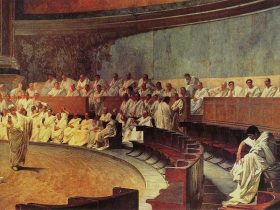Content
The interest rate and the number of periods must have consistent units. If one period is one year, the interest rate must be X% per year, and vis versa.
- Between cash flow struggles, equipment malfunctions, business opportunities, and unfortunate emergencies, a cash flow loan…
- Calculate the future value of an investment worth $1,000 today in 100 years using both 1% simple annual interest and 1% compounded annually.
- You can use the FV function to get the future value of an investment assuming periodic, constant payments with a constant interest rate.
- The smaller the difference between the factors of 72 (i.e., the number of years and the annual interest rate) the more accurate the estimate.
- For example, assume a $1,000 investment is held for five years in a savings account with 10% simple interest paid annually.
You can view this as a single lump sum with multiple successive interest rates. The amount of money needed today is the maturity amount (\(FV\)). Change the N, I/Y, and C/Y as required for the next segment. Solving for the unknown \(FV\) on the right of the timeline means that you must start at the left side of the timeline. To arrive at the solution, you need to work from left to right one time segment at a time using Formula 9.3. If you borrow money from your friend and then pay it back, the initial loan is received by you and hence entered as a positive \(PV\) for you. As you pay back the loan, money leaves you and therefore the \(FV\) is negative for you.
Future Value Formula
The time value of money is fundamental to all financial planning, from the decision you make to buy or lease a car to a corporate decision to invest in new machinery. Using future value and other measures can help you make sound financial decisions. Once you know these three variables, you can plug them into the appropriate equation.
- If you know any three of these four variables, you will be able to calculate the unknown amount.
- The Excel FVSCHEDULE function returns the future value of a single sum based on a schedule of given interest rates.
- It means if the amount of $3,415 is invested today @10% per year compounded annually, it will grow to $5,000 in 4 years.
- Press 2nd [P/Y] to enter payments per year and/or compounding periods per year.
- Assets that are commonly valued are investments, such as savings accounts or real estate.
- The FW$1 is used to compound a single present amount to its future amount.
Understand the definition of future value and the future value formula. Explore some examples that show how to calculate the future value of an investment. The “future value of an annuity” is the value of a series of payments, like contributions to a 401, over time. The term “annuity” refers to a series of payments, not the financial product. The number of periods corresponds to the number of times the interest is accrued. In the case of simple interest the number of periods, t, is multiplied by their interest rate. This makes sense because if you earn $30 of interest in the first period, you also earn $30 of interest in the last period, so the total amount of interest earned is simple t x $30.
This Problem Has Been Solved!
There are two primary ways of determining how much an investment will be worth in the future if the time frame is more than one period. Compound interest on a loan or deposit accrues on both the initial principal and the accumulated interest earned. Compounding is the process in which an asset’s earnings, from either capital gains or interest, are reinvested to generate additional earnings. James Chen, CMT is an expert trader, investment adviser, and global market strategist. Now let’s use the formula above to calculate the future value of a single amount.
In these cases, the PV and FV have been incorrectly set to the same cash flow sign. When doing financial calculations it is important to “be somebody” in the transaction.
In this case, the FV of the $1,000 initial investment is $1,000 × [1 + (0.10 x 5)], or $1,500. Future value is the value of a current asset at a future date based on an assumed rate of growth. The future value is important to investors and financial planners, as they use it to estimate how much an investment made today will be worth in the future.
Future Value Calculations With Variable Changes
PV varies jointly with FV and inversely with i and n, which makes sense based on what we know about the time value of money. Interest rate The percentage of an amount of money charged for its use per some period of time. It can also be thought of as the cost of not having money for one period, or the amount paid on an investment per year. If there is more than one payment, we must multiply each payment by the appropriate FW$1 factor and add up all of the future values. The sum of the future values is the total future value of the stream of payments. When we calculated the future value of a single amount or payment, we multiplied the payment by the appropriate FW$1 factor. Future value, or FV, is what money is expected to be worth in the future.
- Calculating the present value of a single amount is a matter of combining all of the different parts we have already discussed.
- For example, the future value of a dollar is worth 33% more if invested for 30 years at 5% instead of 4%.
- There can be no such things as mortgages, auto loans, or credit cards without FV.
- From the graph above, the higher the interest rate, the higher the future value.
You can also find a variety of future value calculators online. Calculate the periodic interest by applying Formula 9.1. Calculate the principal and the interest together, which is called the maturity value (\(FV\)). If you have money coming into your possession and you are receiving it , you must enter the number as a POSITIVE number.
Therefore, the calculator’s built-in shortcut feature automatically copies any value entered into the P/Y variable to the C/Y variable. If the P/Y and C/Y are not the same, you can scroll down and re-enter the C/Y as needed.
How To Calculate The Average Annual Rate Of Return In Excel
That is, if the interest rate is 5% per year, one period is one year. However, if the interest rate is 5% per month, t or n must reflect the number of periods in terms of months. Suppose you make a deposit of $100 in the bank and earn 5% interest per year. After one year, you earn 5% interest, or $5, bringing your total balance to $105. One more year passes, and it’s time to accrue more interest. Since simple interest is paid only on your principal ($100), you earn 5% of $100, not 5% of $105.
Click on the small box in the bottom right corner of the cell and drag it downward until the cells immediately to the right of your other values are highlighted. When you release your finger, Excel copies the formula and calculates the future values corresponding to the number of days listed in the first column you created. Create a column that lists the number of days for which you want to calculate future values. For example, to calculate the value after 10, 20 and 30 days, enter those values in your vertical column, respectively. The Future Value can be calculated by knowing the present value, interest rate, and number of periods, and plugging them into an equation.
Lessons
So if you invest $4,000 per year for 20 years, with 6% interest rate, you will have about $147,000 at the end of the 20th year. Note that n is the number of time periods that equal series of payments occur. At 12% interest per year compounded semiannually, the company needs to invest $334,000 today to accumulate $600,000 in 5 years. The total interest income of $265,200 will be earned over the period. The present value is computed either for a single payment or for a series of payments to be received in future. This article explains the computation of the present value of a single payment to be received at a single point of time in future. To understand the computation of the present value of a series of payments to be received in future, read ‘present value of an annuity’ article.
When any variable changes, you must break the timeline into separate time fragments at the point of the change. This timeline format is Future value of a single amount similar to those used in Section 8.1, involving variable simple interest rates. The timeline illustrates the employee’s new scenario.
In the future value formula, n stands for the number of interest-compounding periods that occur during a specified time period. For instance, if you’re calculating an investment’s worth after five years, and interest on the investment is compounded annually, n would be 5 in the equation. The future value formula is based on two main assumptions. First, it assumes that https://accountingcoaching.online/ the current value of the asset will be untouched during the period of the investment, and will be delivered as a lump sum, or single payment, in the future. Second, the future value formula is based on a constant growth rate during the investment period. In addition to that, the formula used to calculate the future value is based on the type of interest being earned.
For each time segment, calculate the periodic interest rate by applying Formula 9.1. The simple interest rate considers that the initial investment is kept untouched during the period of the investment and assumes that the interest earned is withdrawn after each period.
Calculation #2
Holding other variables constant, the number of periods `n` is also increasing in `FV`, and decreasing in `PV` and `r`. You can also use the app to see the effect of small differences in interest rates on the future value over many years. For example, the future value of a dollar is worth 33% more if invested for 30 years at 5% instead of 4%. The following app will calculate the future value of $1 for every year up to the maximum year you select. For example, $100 promised two years from now might be worth $90 today. By “worth” we mean that a saver would voluntarily give up $90 today in exchange for a promise of $100 two years hence. The value today ($90) is called the present value of the amount promised ($100).
Below is the graph illustrating the relationship between interest rate over time for future value of one dollar. Harold Averkamp has worked as a university accounting instructor, accountant, and consultant for more than 25 years. He is the sole author of all the materials on AccountingCoach.com.
The computation of the present value and future value is presented using the formula approach, the financial calculator approach, and the spreadsheet approach. When calculating a future value , you are calculating how much a given amount of money today will be worth some time in the future. In order to calculate the FV, the other three variables must be known. Recall that the interest rate is represented by either r or i, and the number of periods is represented by either t or n. It is also important to remember that the interest rate and the periods must be in the same units.
Present Value Vs Future Value
In essence it means that the receipt of $100 in three years is worth the same as the receipt of $86.38 today. The logic behind this assertion is that if we deposited $86.38 into an investment account paying 5% annually, it would grow to $100 in three years.
How Do You Calculate Future Value On A Calculator?
For example, to enter a compounding frequency of 4, press 4 while C/Y is on your screen and then press Enter. Most commonly the P/Y and C/Y are the same number, as demonstrated in later chapters.
But using the future value formula before you invest can increase your chances of picking the right stock at the right time. With simple interest, an investment accrues interest based solely on the initial investment amount.
This assumes that you don’t need to make any payments during the 10 years, and that the interest compounds. Unless the problem states otherwise, it is safe to make these assumptions – you will be told if there are payments during the 10 year period or if it is simple interest. The first concept of accruing interest is called “simple interest. ” Simple interest means that you earn interest only on the principal. Your total balance will go up each period, because you earn interest each period, but the interest is paid only on the amount you originally borrowed/deposited. A rate of return is the gain or loss of an investment over a specified period of time, expressed as a percentage of the investment’s cost. Future value of an single sum of money is the amount that will accumulate at the end of n periods if the a sum of money at time 0 grows at an interest rate i. The future value is the sum of present value and the total interest.
BAII Plus calculator is a business calculator pre-programmed with compound interest formulas. These functions are called the “time value of money” buttons. The compound interest buttons are found in two areas of the calculator, as shown in the photo. When using the formula, there are a few guidelines to take into consideration. One, if the interest rate is stated as more often than annually, you need to change the interest rate and number of periods. Two, an easy way to deal with the ‘carrot’ is to multiply out that side of the formula. When considering a single-period investment, n is, by definition, one.
And you are offered an investment, which can be the imaginary savings account, that gives you 6% per year compound interest rates. And you want to know how much money, equal payments, you need to save each year, or invest– deposit in your account in the end of each year.













Cevapla